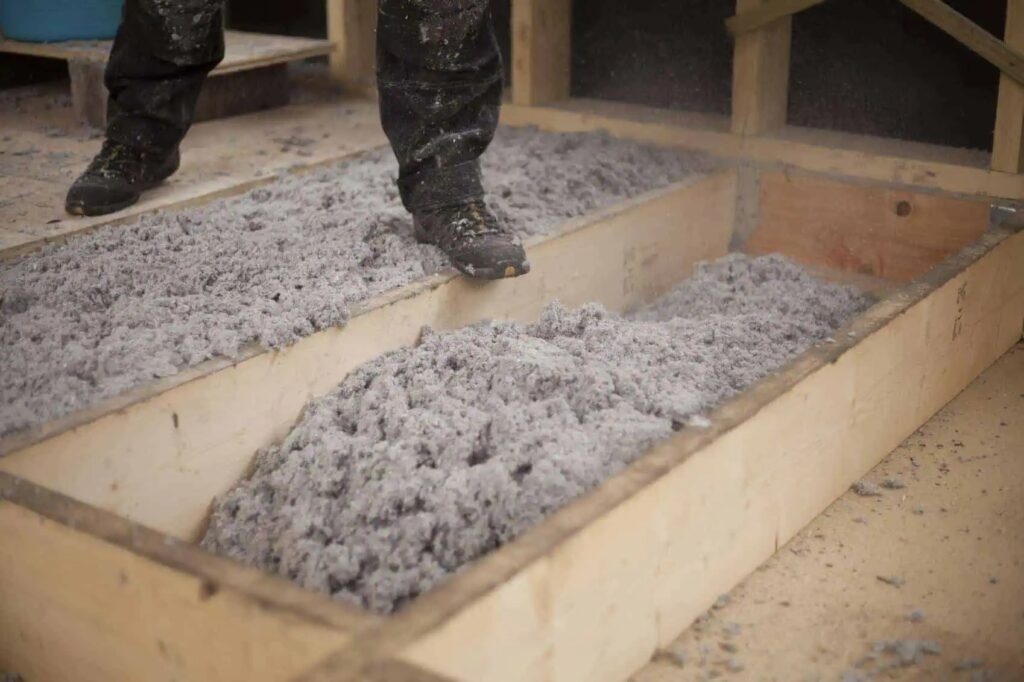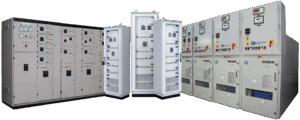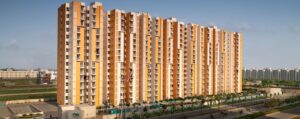Blown-in cellulose insulation provides substantial environmental advantages over other insulation types. Composed of up to 85% recycled paper fiber, it actively diverts waste from landfills and improves indoor energy efficiency. This eco-friendly material stands out for its low production emissions, non-toxic ingredients, and impressive thermal performance.
Builders, architects, and homeowners looking for sustainable insulation methods frequently opt for blown-in cellulose due to its renewable composition, minimal environmental impact, and compatibility with green building certifications. In this guide, we’ll examine its ecological strengths, technical specs, installation implications, and how it compares to other insulation systems.
Environmental Impact of Blown-In Cellulose
treated with borate-based fire retardants, and packed into tight insulation cavities via pneumatic blowers. The production process has an extremely low carbon footprint and supports a circular economy.
Key Environmental Advantages
- High Recycled Content: Most cellulose products consist of 80–85% post-consumer waste, reducing demand for virgin resources.
- Low Embodied Energy: Manufacturing requires significantly less energy than fiberglass or spray foam, lowering greenhouse gas emissions.
- Biodegradability: Once removed, cellulose can be composted or safely disposed of without leaving long-term synthetic waste.
- Non-Toxic Composition: Borate treatment deters mold, insects, and rodents while remaining safe for humans and pets.
- Low Emissions: Contains no formaldehyde or hazardous volatile organic compounds (VOCs).
- Supports Carbon Sequestration: Cellulose temporarily stores carbon absorbed during the original plant’s growth cycle.
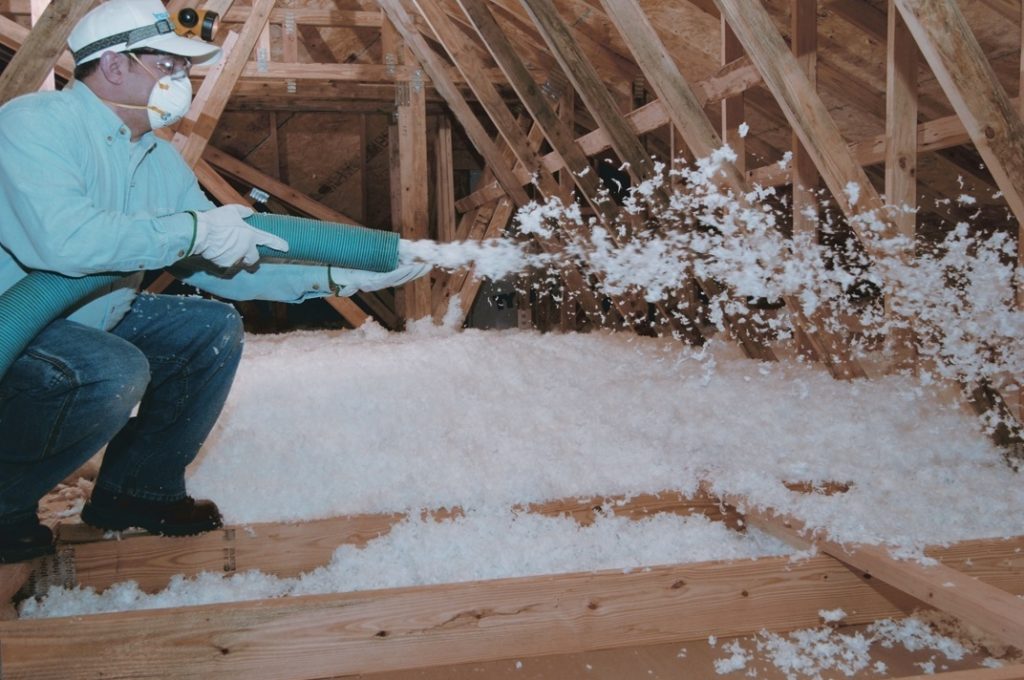
Comparison with Other Insulation Types
| Feature | Blown-In Cellulose | Fiberglass Batt | Spray Foam (Closed Cell) |
| Recycled Content | Up to 85% | ~30% | <10% |
| Embodied Energy | Low | Moderate | High |
| R-Value per Inch | ~3.2–3.8 | ~2.9–3.8 | ~6.0–7.0 |
| Air Sealing Ability | Moderate | Low | High |
| Fire Resistance | High (borate-treated) | Moderate | High (chemical-based) |
| Biodegradable/Compostable | Yes | No | No |
| Installation Waste | Minimal | Moderate | High |
| Off-Gassing Risk | None | Low | Moderate–High |
| Chemical Sensitivity Risk | Very Low | Moderate | High |
| Noise Reduction Performance | Excellent | Moderate | High |
Technical Specifications
| Attribute | Value / Description |
| Material Composition | 80–85% recycled paper |
| Fire Retardant Additive | Borate-based (non-toxic) |
| Typical Installed Density | 1.6–3.5 lb/ft³ |
| Thermal Resistance (R-value) | 3.2 to 3.8 per inch |
| Settling Rate | Up to 20% (compensated at install) |
| Moisture Permeability | High – allows drying |
| Mold Resistance | High due to borate treatment |
| Application Temperature Range | -40°F to 200°F |
| Acoustical Rating | High – reduces airborne sound |
| Installation Method | Blown in with mechanical blower |
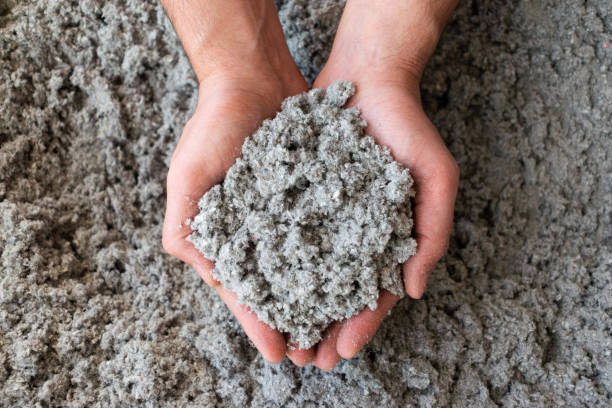
Market Insights
Cellulose insulation’s market share has grown steadily over the last decade, driven by demand for low-impact building materials and tighter energy codes. The U.S. Department of Energy reports cellulose can reduce heating and cooling costs by 20–25% annually. According to NAIMA, cellulose keeps over 3 million tons of paper out of landfills each year.
Green certifications such as LEED and ENERGY STAR increasingly recognize cellulose’s contribution to sustainable construction. Builders seeking tax credits or environmental compliance often turn to cellulose for both new builds and retrofit projects.
Bonus Tip
Cellulose insulation can earn multiple LEED points when used in combination with high-efficiency HVAC and air sealing strategies.
Things to Consider Before Making a Decision
- Moisture Sensitivity: Cellulose performs best when kept dry. Use vapor barriers or hybrid assemblies in humid environments.
- Settling Compensation: During installation, installers overfill cavities to counteract future settling. This is a standard industry practice.
- Application Areas: Works well in attics, wall cavities, and floors. In very tight or irregular spaces, spray foam may be more effective.
- Fire and Building Code Requirements: Installers must comply with regional codes concerning fire barriers and thermal protection.
- Climate Suitability: In cold regions, consider combining cellulose with vapor control layers and air sealing membranes.
- Installer Experience: Inexperienced installers may create air gaps or apply uneven coverage, reducing insulation effectiveness.
Bonus Tip
Check for local rebates or utility incentives—many energy programs offer financial support for cellulose insulation upgrades.
Common Questions
How long does blown-in cellulose insulation last?
Installed properly, cellulose insulation can perform effectively for 30 years or longer. Its lifespan is contingent on moisture protection and cavity sealing.
Is cellulose insulation safe for people with respiratory sensitivities?
Yes. It is dustier during installation than foam but does not release fibers or off-gas chemicals over time. Once installed, it’s safe for individuals with allergies or asthma.
Can cellulose be combined with other insulation?
Yes. It can enhance thermal resistance when layered over fiberglass batts or used with spray foam in hybrid wall systems.
Does cellulose resist pests and mold?
Borate treatments deter most insects and rodents and inhibit fungal growth. Cellulose is naturally mold-resistant when kept dry.
How complex is the installation process?
Professionals use a high-powered blower to evenly distribute cellulose in wall and attic cavities. It requires skill to achieve consistent density and coverage.
Topic FAQ
What makes cellulose more eco-friendly than foam or fiberglass?
Its high recycled content, low manufacturing energy, and compostable nature make it a cleaner, more sustainable insulation.
Does cellulose insulation reduce long-term energy consumption?
Yes. By improving the building envelope, it reduces reliance on heating and cooling systems and lowers utility bills.
Is cellulose flammable?
No. Borate fire retardants render cellulose resistant to ignition and slow flame spread.
Is it suitable for DIY installation?
While possible, DIY application often results in uneven fill. Professional installation ensures optimal thermal and air performance.
Does cellulose insulation settle and lose effectiveness?
It can settle over time, but professional overfill methods compensate for this during installation to maintain R-value.
Can it help with soundproofing?
Yes. Cellulose has strong sound absorption properties and is often used to reduce noise in residential and commercial buildings.
Make the Right Decision
Blown-in cellulose insulation stands out as a top-tier environmental solution for energy-efficient buildings. Its high recycled content, low carbon manufacturing, and performance longevity make it a smart choice for sustainable construction.
Before choosing an insulation type, assess your project’s climate zone, existing building envelope, and air sealing strategies. Cellulose delivers strong ecological value but is most effective when professionally installed and paired with moisture and air management systems.
Choosing cellulose is not only an investment in energy savings but also a decision that supports healthier, lower-impact living environments.
Reviewer:
Jack Parker, a spray foam professional with 7 years of experience, reviewed this post and helped improve sections dealing with brand clarity and customer.

